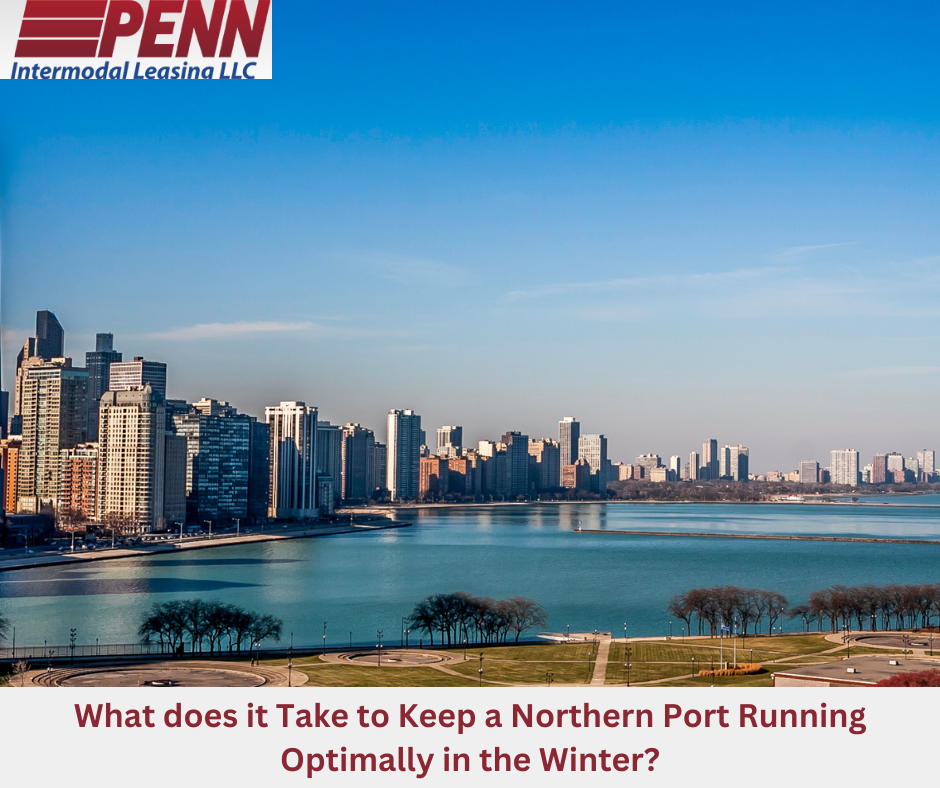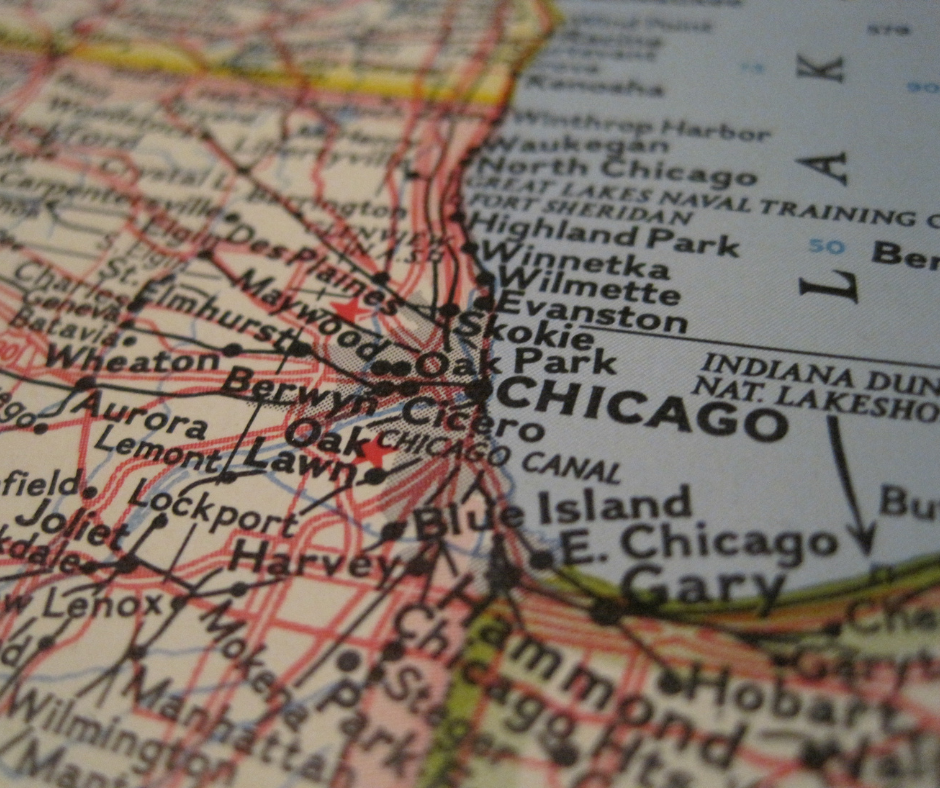
The Port of Chicago has been hailed the “greatest intermodal facility in North America ” by the publication, Freight Waves. In the early 1800’s, the Chicago “port” was a series of wharfs and piers serving manufacturing, trade and industry. By 1871, Chicago was America’s busiest port in spite of being closed in the winter with more ships arriving than in New York, San Francisco, Philadelphia, Baltimore, Charleston, and Mobile combined. As new forms of transportation evolved the port developed a robust network of rail, highway, and marine connections.
50 years later, in 1921, the Illinois legislature passed the Lake Calumet Harbor Act granting authorization for the Port of Chicago to establish a deep water port. In 1951, The Illinois International Port District (IIPD) was established to oversee harbor and port development, promote commerce and facilitate shippers use of overland and marine modes of transportation. The IIPD’s objective to bring world markets to Chicago’s doorstep and Chicago’s products to the world, is prospering.
Why is the Port of Chicago’s location so important as an Intermodal Facility
Location, location, location!
Located on the shore of Lake Michigan, the Port of Chicago links to the Atlantic Ocean via the St. Lawrence Seaway, the Gulf of Mexico via the Mississippi River, and an inland canal and river system reaching into the midwest and Canada. Timely and cost effective access to diverse international markets is a unique attribute of the Port of Chicago.
The Port of Chicago’s location establishes it as a gateway to the Midwest and it serves as a hub for transportation. The intermodal facility is at the intersection of twelve (12) railroads, half of them categorized as Class I, noted for their excellent rail switching and terminal service. In addition to superior rail service, nearly 600 motor carriers provide trucking services throughout the Midwest. The Port of Chicago also sits at the intersection of three (3) of the largest interstate highways in the country and is within 10 miles of four (4) more interstates. As expected, warehouse facilities are present in great numbers throughout the port.
Some facts about the the Port of Chicago’s Intermodal Facility
The city of Chicago’s origins date back to 1673, when it was discovered that this area could connect the Mississippi Valley to the Great Lakes forming one of the greatest water transit systems on the continent. From its earliest time it has served as a key distribution center of furs and trade, the modern port has embraced its role as a commercial shipping center. The Port of Chicago now reigns as the largest port along the Great Lakes.
The Port of Chicago is an intermodal facility that joins several major port facilities within the Chicago city limits. The port is operated under the supervision of the IIPD and centered around two essential facilities, the Senator Dan Dougherty Harbor and the Iroquois Landing Lakefront Terminus. Calumet Harbor is maintained by the U.S. Army Corps of Engineers. The IIPD reports that over $824 million in economic activity is generated through maritime commerce.

What makes the Port of Chicago’s Location so Vital to the Transportation Industry?
An essential component of the Port of Chicago’s vitality in the transportation industry is intermodalism, efficiently moving cargo containers using multiple means of transport such as trucks, railroads, airplanes, and ships. The Chicago Metropolitan Agency for Planning (CMAP) reports that 25 to 33 percent of all American freight is connected through one of Chicago’s intermodal facilities. The numerous intermodal facilities, transportation networks, and accessibility to national and international shipping routes and the interstate highway system, have the Port of Chicago poised to meet the growing demands of the freight industry.
How does the Port of Chicago Stay Open During Harsh Winters in a Northern Climate?
One of the keys to the success at the Port of Chicago is resilience to the harsh northern climate facilitated by the port’s multimodal transportation network. The design and construction of the port’s intermodal facilities were carefully planned for functionality even in the worst winter weather. For example, the Iroquois Landing Terminal provides both deep and shallow drafts with the terminal and is accessible by river, lake, and ocean vessels. The Lake Calumet facility can also receive international shipping vessels. However, when the St. Lawrence Seaway closes from inclement weather, the port continues operation with year-round barge traffic.
The Port of Chicago’s proactive approach to upgrading its infrastructure is essential to battling severe storms and winter weather as well as meeting the increased demand for cargo. As ports, transportation, and shipping industries are forced to contend with climate trends, continued investment in upgrades is necessary in order to maintain efficient operations during adverse weather.
Penn Intermodal Leasing offers intermodal bulk liquid chassis for lease, available in Chicago and other major US port cities including Jacksonville (FL), Newark (NJ), and Houston (TX) this winter and all year long. Contact us for the availability of new or used chassis today.
Sources
- Illinois International Port District, https://www.iipd.com/. Accessed: 12 November 2022.
- “Intermodalism — Metropolitan Chicago’s Built-in Economic Advantage – CMAP.” www.cmap.illinois.gov, Accessed 12 March 2022.
- Mall, Scott. “FreightWaves Classics: Port of Chicago Billed as the ‘Greatest Intermodal Facility in North America.’” FreightWaves, 2 July 2021, Accessed 15 November 2022.
- Poetry Foundation. “Poetry Magazine.” Poetry Foundation, 2010, Accessed 15 March 2022.

